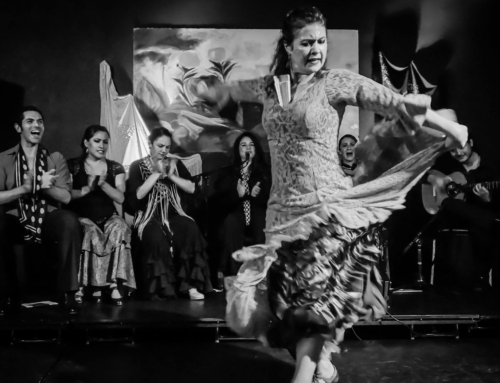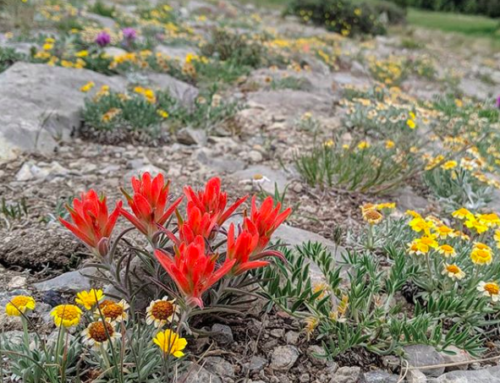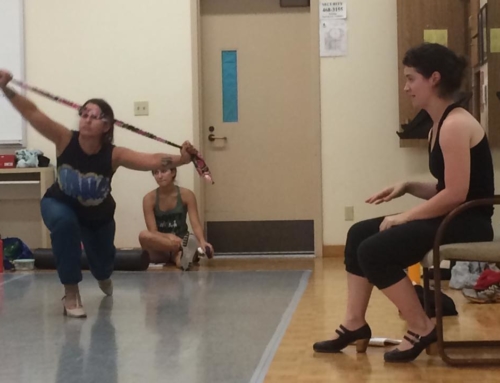Radical ideas that shouldn’t be radical (in flamenco more specifically, but in other dance forms too):
1) holding auditions
2) letting dancers wear their natural hair (i.e. not slicked back)
2.5) letting dancers be individuals
3) not choosing dancers based on age
1. Open and public auditions in flamenco are not nearly as common as they ought to be. People hire their friends, they hire people based on word of mouth, or any other number of reasons other than an audition. Yes, knowing someone’s work history is very helpful, but going solely off word of mouth means there might be some incredible dancers out there who won’t have an opportunity to perform or grow because people are only hiring who they know.
Holding auditions for Abrepaso was one of the most nerve-racking things I have ever done. I’m pretty sure I was way more nervous than the dancers. I went in with a clear game plan, got advice and assistance from mentors, and things went so smoothly! I ended up taking all the dancers who showed up–I was so impressed with their dancing, attitudes, and their growth even within the short 2-hour audition.
These were dancers I had never heard of or met before for the most part. And they showed up (literally and figuratively), which also made it clear to me they were interested in my work.
Holding auditions means building community, building something larger than one person or a clique or a group of friends. It’s about the art and the vision and finding the best people to carry out that vision…
2. I have struggled with flamenco hair from day one. I have super curly and frizzy hair. While I do not think it’s generally acceptable to perform with my hair in its usual crazy state, having to slick in back doesn’t really make sense either. For one company I worked with, they would get mad about a single hair sticking out. I would slick my hair back, gel, hairspray, etc., and yet–there were always little hairs that would poke out, determined to be curly. I often slick my hair into a bun out of my own volition, as part of the professional attire and presentation of flamenco. But there are ways to cleanly wear natural hair styles, no messy frizz but letting the natural hair be itself. And our hair is part of our body, why not, when a dance calls for it, let the hair also be part of the dance?…I always think of this video when I think about hair being part of the dance:
Why is that such an unheard of concept in a dance company?….I think it’s because many dance companies want the dancers to all be the same…which leads me to:
2.5. I don’t want my dancers to be cookie cutter versions of me or anyone else. I want them to be them. Yes, I correct technique, push them in their dancing abilities, but I also work to bring out their own personal expression. How? I think the use of metaphor, helping them find their story to tell, or a way to relate to the story I am choreographing through their own experiences, so that they bring a piece of themselves to the work, rather than just imitate my style and movement. Yes, I want the dancers in my company to be able to fulfill my stylistic and aesthetic choices, but I want them to be fully present as themselves as they carry out those movements; I want them to be honest to their expression and experiences….In the choreographic process, that often means waiting for happy accidents to happen, or creating situations where “happy accidents” are bound to happen (which makes those “happy accidents” constructed). In those moments, I am more of a curator than anything else–selecting the movements, moments, gestures, expressions that fulfill a goal or that call to me, and then arrange those within the choreography…
3. I don’t see age as a limiting factor in dance. Period. Yes, you lose flexibility and other physical capacities as you get older, but you also gain life experience, which a good performer translates into expression. If a dancer can dance, express, grow, why should I care how old they are? Check out Dance On and of course Pina Bausch’s work…





One of the most beautiful dances I ever saw was with Karen Lugo dancing with her hair down. She incorporated it into her performance, playing with it and her fan and accentuating turns with it. Definitely there is room for all kinds of hair in flamenco!